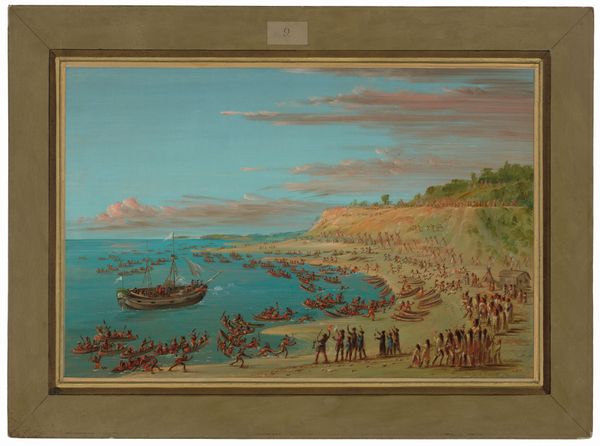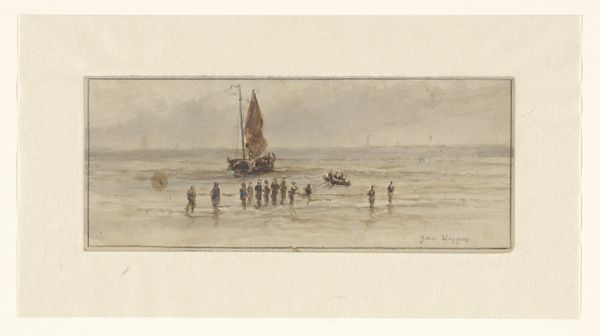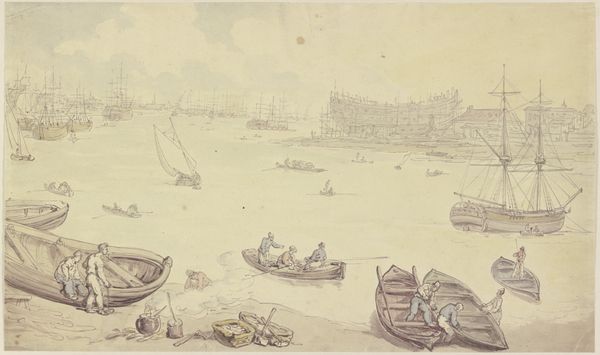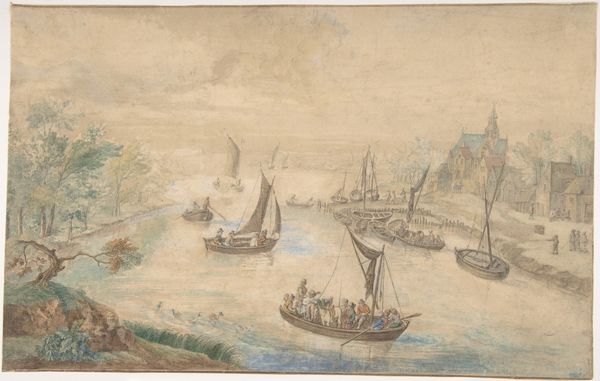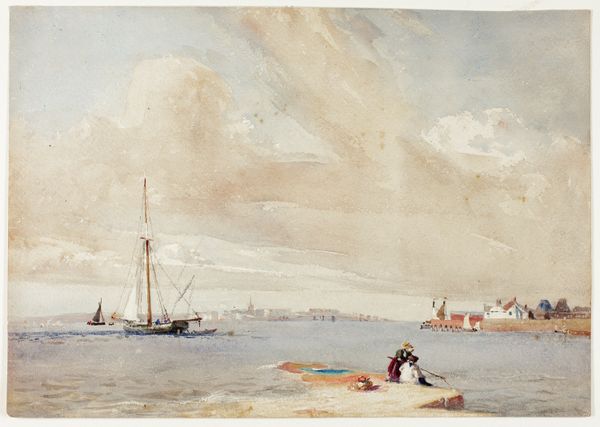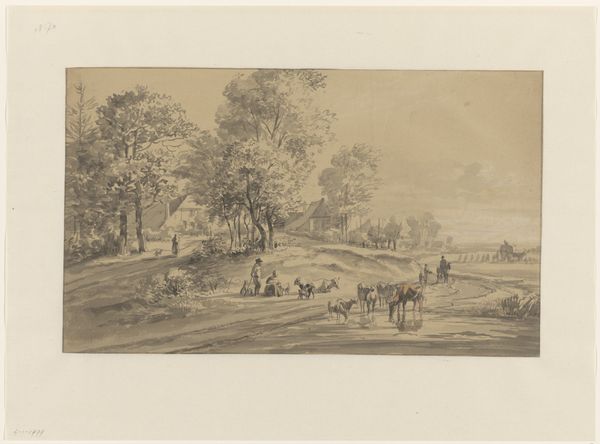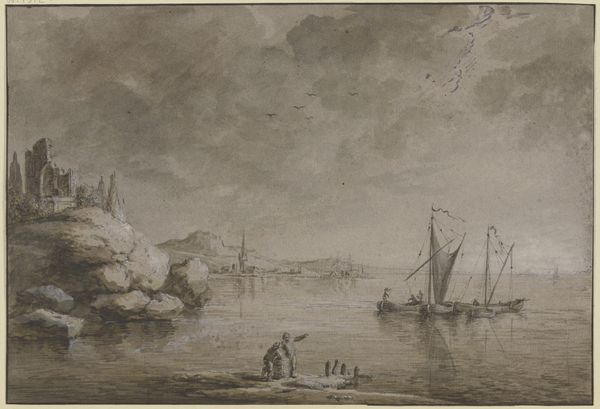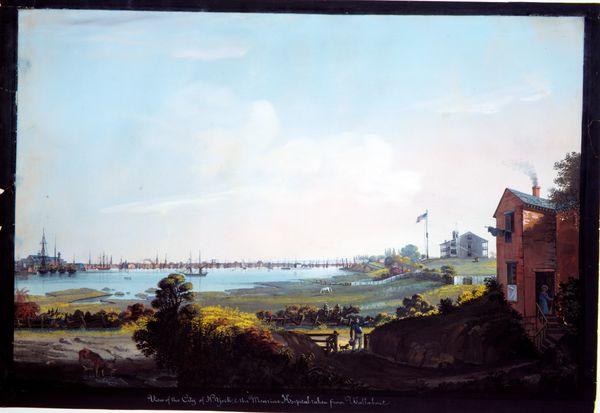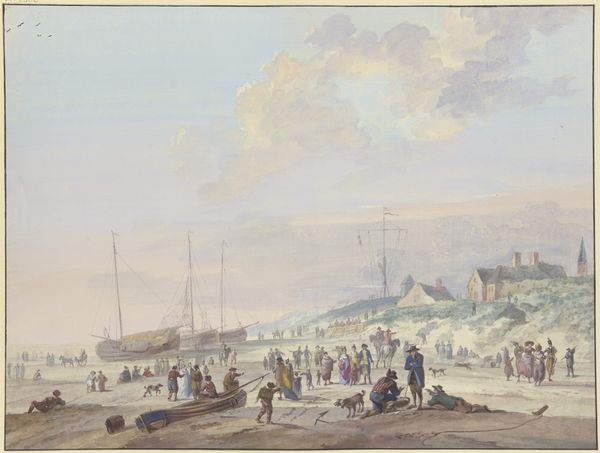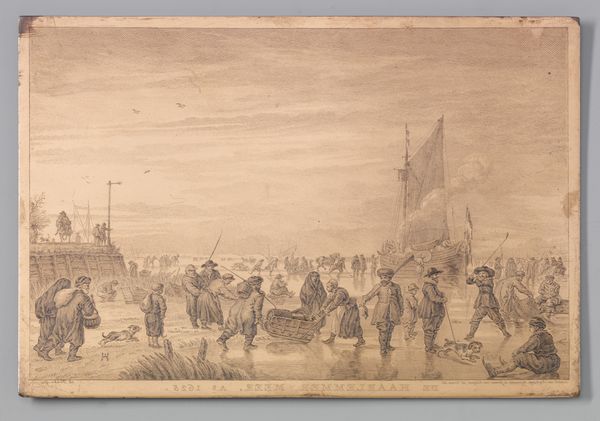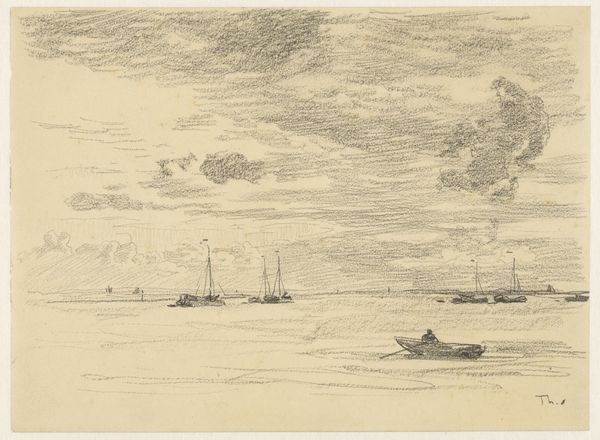
The Expedition Leaving Fort Frontenac on Lake Ontario. November 18, 1678 1847 - 1848
0:00
0:00
painting, plein-air, watercolor
#
water colours
#
painting
#
plein-air
#
landscape
#
oil painting
#
watercolor
#
watercolour illustration
#
history-painting
#
watercolor
Dimensions: overall: 37.8 x 51 cm (14 7/8 x 20 1/16 in.)
Copyright: National Gallery of Art: CC0 1.0
Curator: Here we have "The Expedition Leaving Fort Frontenac on Lake Ontario, November 18, 1678" painted between 1847 and 1848 by George Catlin. It seems to be an oil painting or a watercolour illustration showing a scene from a colonial past. Editor: My first impression is one of stark contrasts. There's the softness of the watercolor meeting a rather severe depiction of colonial enterprise, quite formalized and a bit alienating. The multitudes are reduced to small shapes, making it all seem… cold. Curator: Indeed, while on the surface it reads as a straightforward historical landscape, one has to question whose history is actually being represented. We’re seeing the beginning of an expedition, presumably with its own set of colonial objectives, and we have to wonder how that action impacted the Indigenous people already inhabiting these territories. Editor: Precisely. Look at the scale of production here – all those figures, likely needing sustenance, supplies transported via those canoes, the fort itself. Someone, likely multiple peoples, bore the labor of all of this, and that should give us pause. How was the materiality extracted and what processes were deployed for it all to be assembled? Curator: Right. The labor and resources aren't simply “there” in a neutral landscape. It's critical to remember the human cost behind any narrative of exploration and supposed progress. I find myself drawn to how Indigenous populations might have perceived that fort—not as a sign of advancement but perhaps as an encroachment. Editor: Agreed. Furthermore, I wonder about the materials themselves, specifically the pigments. Where were they sourced? What sort of trade or perhaps forceful exchange went into the creation of the actual painting, let alone the historical event depicted? This wasn't made from nothing! Curator: Absolutely. By interrogating the choices behind it, we can consider the artwork's place within a larger dialogue around colonization, identity, and power. The artist had a point of view, influenced by their own historical context, and we must question that framing. Editor: I'll be leaving this space pondering the unseen labour and costs embedded in what might appear to some as just a historical painting. Curator: I, on the other hand, hope our listeners are now aware of the layers of meaning such artwork could evoke, and understand better the events from a different angle, reflecting on a different set of power relations.
Comments
No comments
Be the first to comment and join the conversation on the ultimate creative platform.
